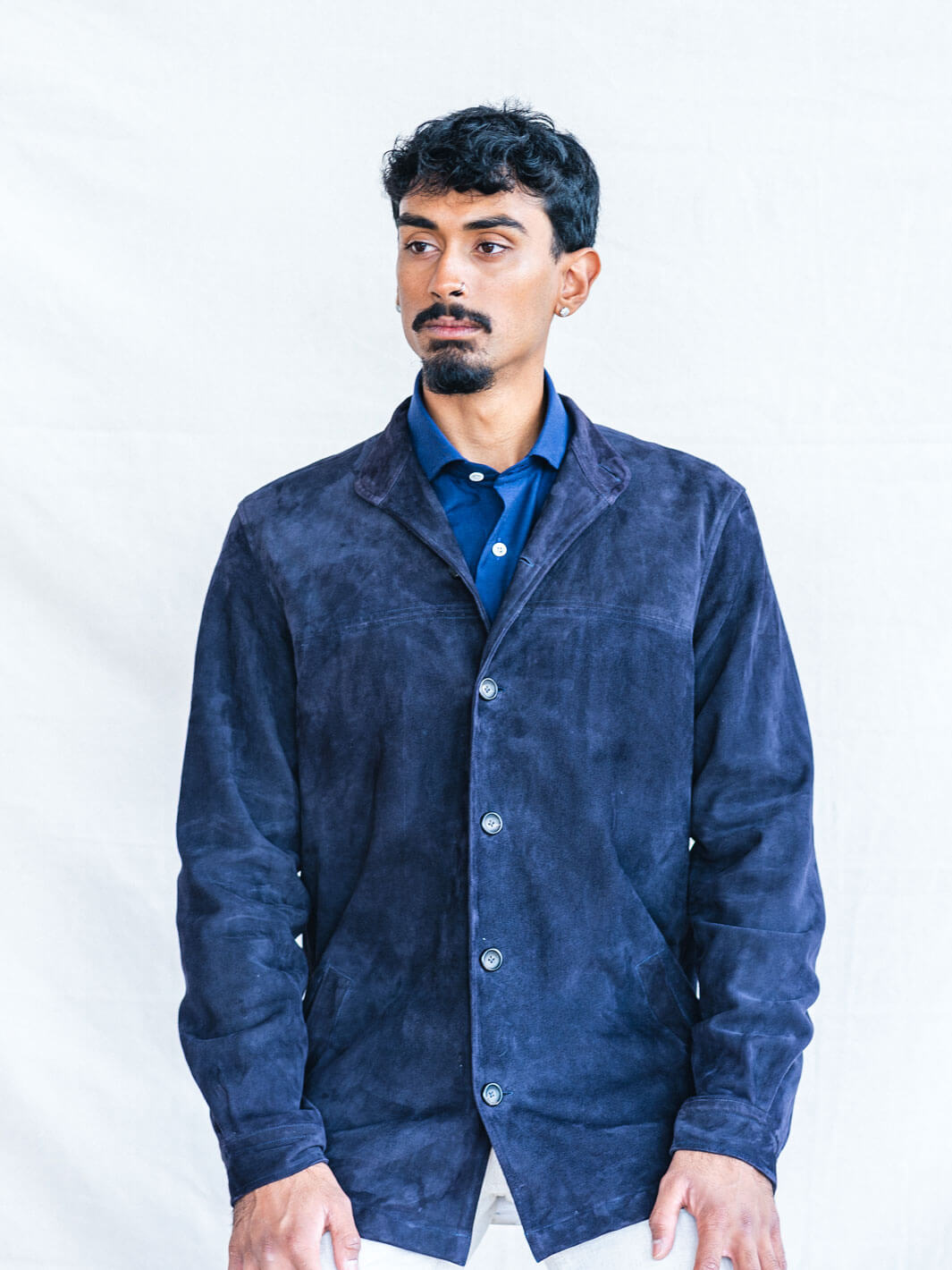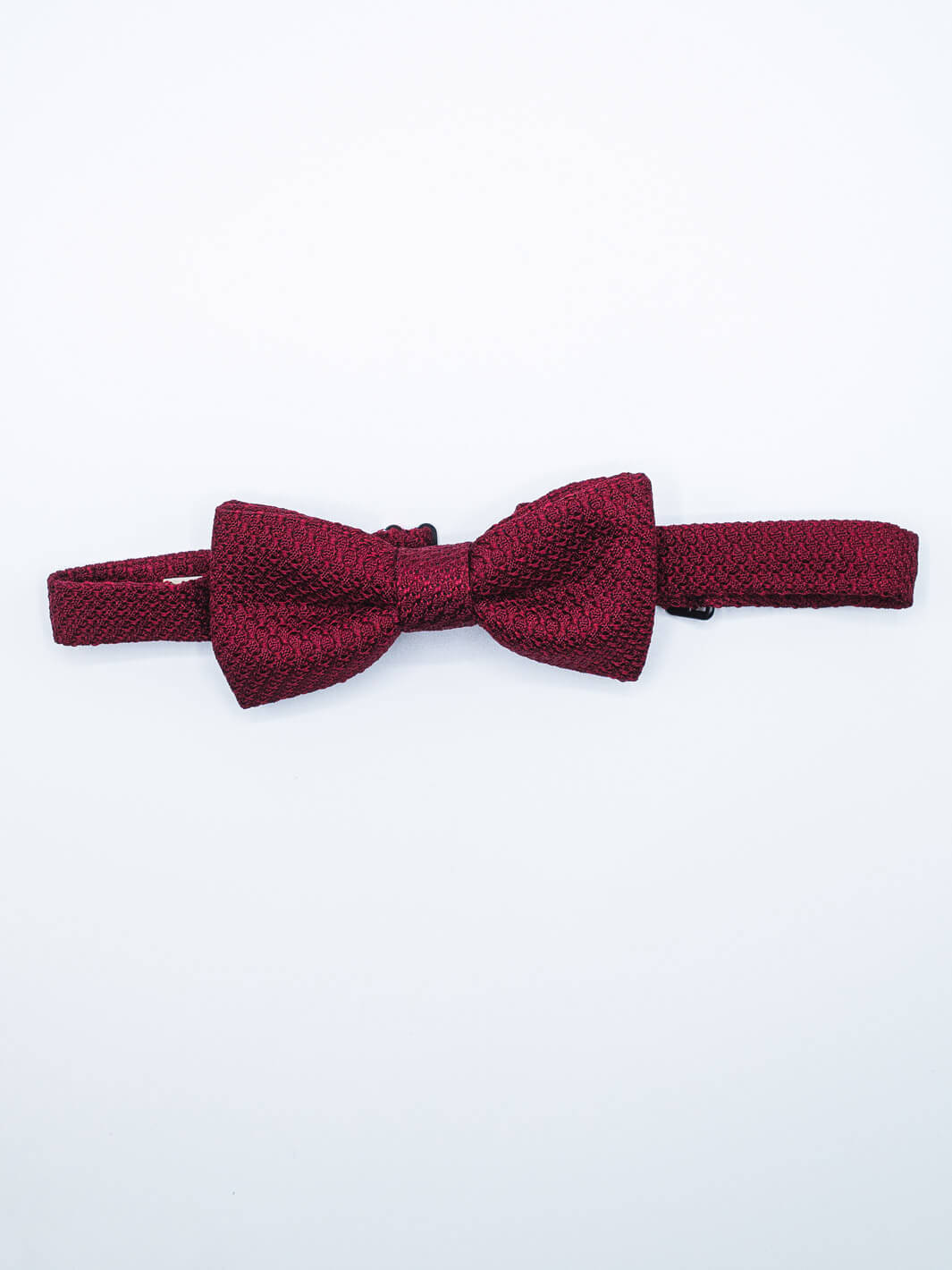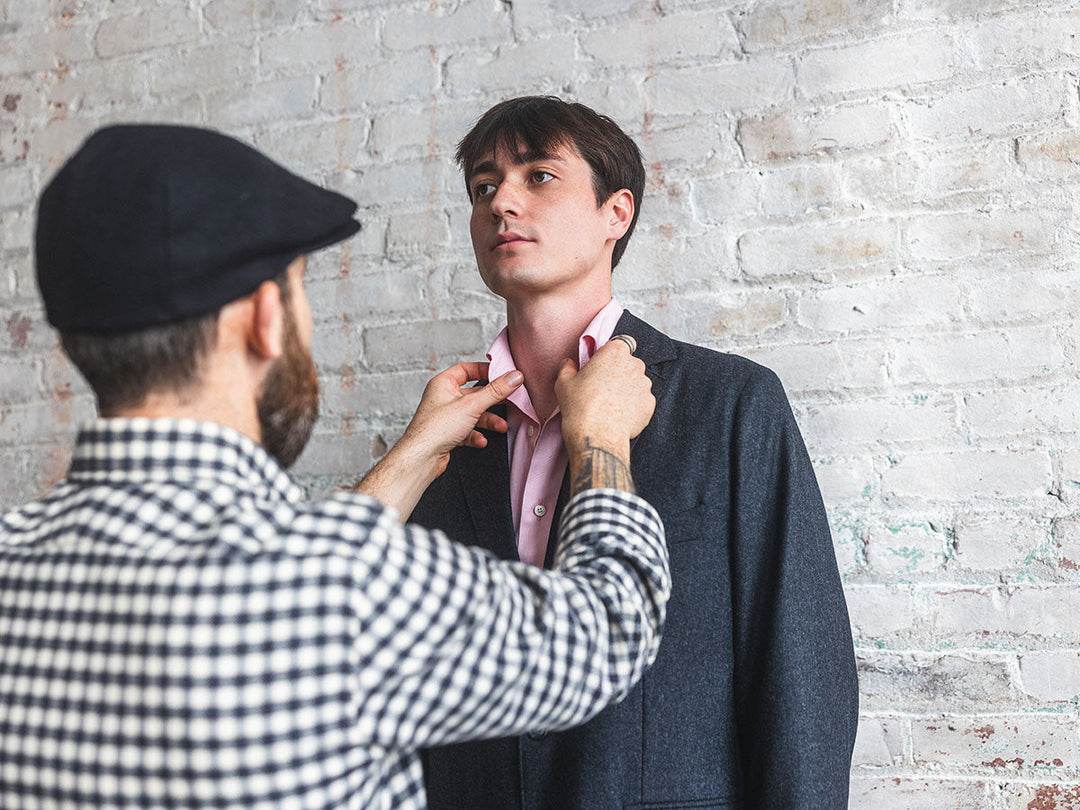Whether crisp and classic or bold and expressive, a neatly folded square of fabric tucked into the breast pocket adds flair, finesse—and often a welcome splash of color—to any jacket with lapels.
And yet, for all its simplicity—being, at heart, just a square of cloth—the pocket square has become one of the most expressive tools in a well-dressed man’s arsenal. From subtle white linen to vibrant silks, it’s evolved far beyond mere decoration, signaling taste, personality, and confidence in a way few accessories can.
But where does this delightfully dapper flourish come from? And how does the modern gent wear it with the panache it deserves?
A Brief History of the Pocket Square
Menswear’s origin stories are as packed with colorful characters as Marvel’s, and the history of the pocket square is a case in point.
Socrates and Plato are on the playbill: both of these titans of philosophy were advocates of personal grooming as a sign of inner discipline and virtue, and thus were surely subscribers to the Ancient Greeks’ tendency to carry linen handkerchiefs infused with rose oil or myrrh to indicate wealth and refinement.

A few hundred years later, Roman emperors used similar pieces of fabric to signal the start of gladiatorial bouts. King Richard II of England is credited as the first to adopt a handkerchief as a style accessory. King Louis XVI of France, at the behest of Marie Antoinette, decreed a uniform size of 16 by 16 inches—thus giving us the quadrangle shape we are familiar with today.
And stylish gents from the Golden Age of Hollywood—think Cary Grant, Fred Astaire, Humphrey Bogart, and James Cagney—are also major protagonists in the pocket square’s evolution into a crucial component of modern, classically elegant dressing.

The Pocket Square Today
“The pocket square should be patterned,” as Canadian-American menswear commentator Derek Guy has put it, “but it should be a distinct design that's not used for shirts, jackets, or neckties… Having a distinctive pattern kind of makes it look like you didn't just cut up a piece of fabric and stuff it into your pocket.”

We concur—hence the aesthetic bravado of our own selection of pocket squares. Subtle polka dots, paisley flourishes, and floral medallions are all popular among Anatoly & Sons customers keen to add an extra splash of color to their ensemble, while our surfer-emblazoned examples in sky blue, dark blue, yellow, and light grey offer a nod to our roots as a California-based outlet with distinctly European stylistic sensibilities. All are made of Italian silk (elsewhere, squares often come in cotton, linen, wool, or various blends) and feature hand-rolled edges.

For many, the pocket square is de rigueur with a formal outfit, but it can add a dash of brio to an ensemble involving jeans, cords, or chinos and a sports jacket worn over a rollneck or open-necked shirt as well. This approach can morph the wearer from the hipper breed of campus tutor into strutting dandy in an instant—and it can be added spontaneously, after you’ve assessed the room’s sartorial vibe.

As always, rules are there to be bent—except one. Almost as important as never using your pocket square as a napkin: never—ever!—wear one that matches your tie. Doing so is akin to serving champagne and caviar with matching branding: tacky, contrived, and tinged with the whiff of the phrase “boxed sets on special offer.”
5 Ways to Fold a Pocket Square
Four-in-hand, Half-Windsor, Full Windsor, Eldredge, Trinity—there are many ways to tie a tie (177,147, according to mathematician Mikael Vejdemo-Johansson).
Pocket squares don’t offer quite as many permutations, but the portmanteau word fabrigami does spring to mind when considering how many ways there are to fold and arrange one before placing it in situ.
Here are five classic folds worth knowing:
-
The Presidential Fold
This option—also known as the Flat Fold—simply involves laying the piece out flat, folding it in half twice to make an upwardly elongated rectangle, then repeating the fold upward to make a perfect square. You’re far more likely to end up channeling Don Draper or James Bond if you’ve ironed the piece flat after folding.
-
The Puff Fold
Steve McQueen in The Thomas Crown Affair serves as inspiration for this approach, aka the Pinch Fold. It entails laying the cloth face up, pinching and lifting it from the center, running the fabric through the looped fingers of the opposite hand, then bunching it from beneath before easing it into the pocket.
-
The Reverse Puff Fold
From here, things get more flamboyant. This method, which creates a row of peaks rising from the pocket, begins with the same steps as the Puff Fold, but you stop three quarters of the way down as you draw the fabric through your looped fingers. Then you turn the whole thing upside down, fold the bottom section up to where the cloth begins to fan out, and place it in the pocket.
-
The Rose Fold
This rather fiddly method achieves a ruffled, spiraled effect, and again begins with looped fingers on the non-dominant hand. After draping the square face up over the loop, use two fingers to push some fabric through the circle, then gently twist the loose fabric around in a circular motion. If you’ve got the knack—and you may want to consult YouTube—the pleats will begin to overlap as you twist and gather the fabric.
-
The Crown Fold
To achieve a look also known as the Three-Point Fold, take one corner to its opposite corner from the flat-lay position, then cross the resulting triangle’s bottom corners to make an X shape. Turn the X’s left side to the right, then vice versa, fold the bottom to the middle, turn the whole thing around, and place—reverently and ceremonially—in the top pocket.
Whichever of the above you opt for, and whatever the social or business context—and numbers three to five are clearly the more elaborate and formal—the Golden Rule is to wear your square with the swagger it deserves.
This is, after all, a sartorial indulgence. Unless, perhaps, you end up chivalrously using it to remove grit from a companion’s eye, it’s an accessory that runs counter to the “form follows function” adage.
It should be rocked, accordingly, with peacockish swagger.









